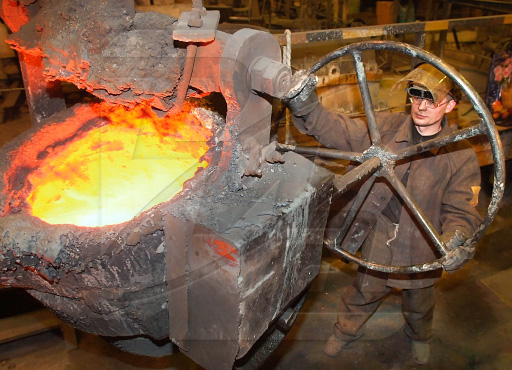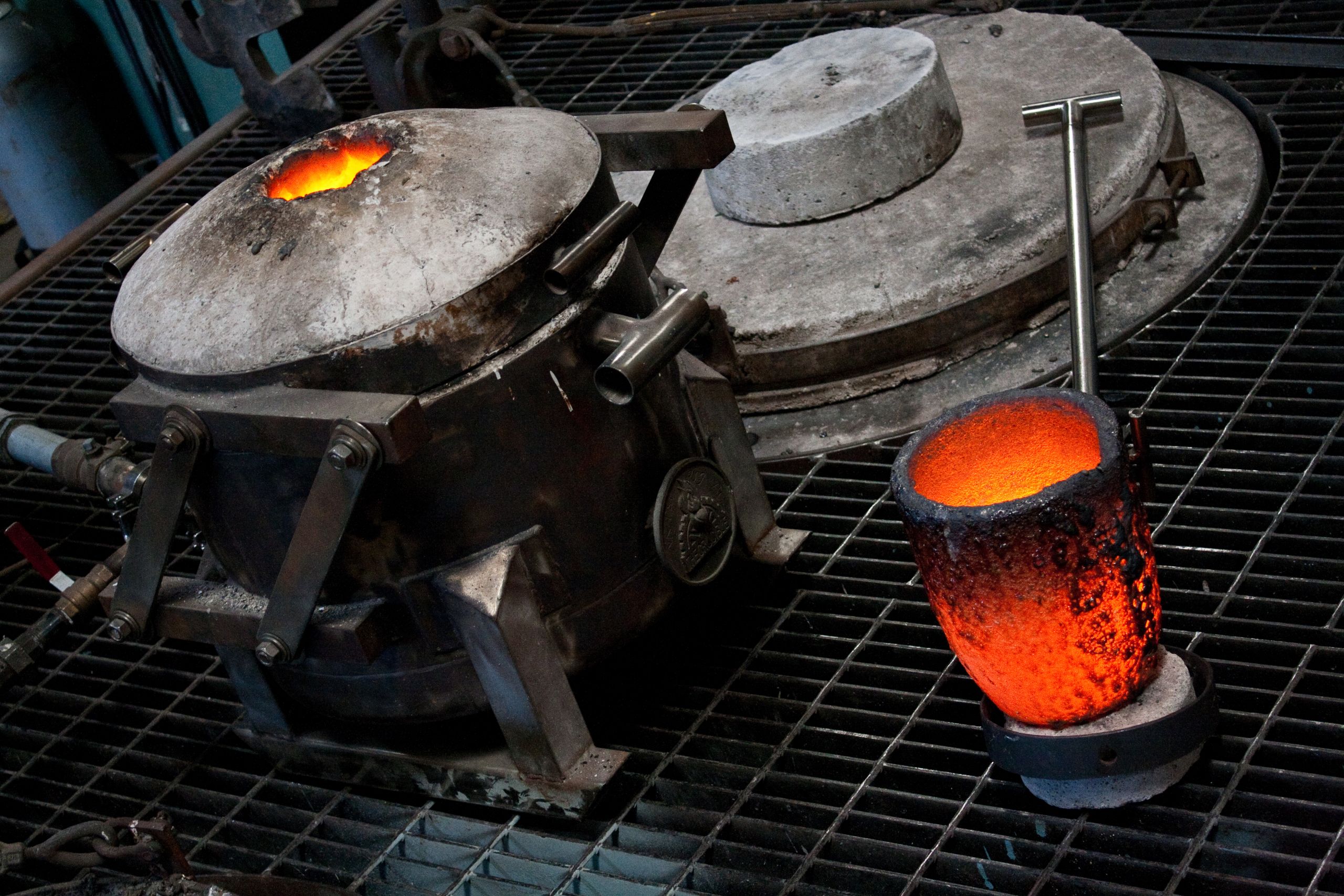Recognizing the Processes and Benefits of a Casting Foundry
Casting shops play an important role in modern manufacturing. They make use of numerous strategies to change liquified materials right into solid kinds, customized for specific applications. Each method, from sand Casting to die casting, uses unique benefits, influencing sectors like automotive and aerospace. Comprehending these processes reveals not just their sensible advantages but additionally the advancements driving their development. What implications do these improvements hold for future manufacturing approaches and sustainability initiatives?
Summary of Casting Processes
Numerous casting processes exist, they all share the fundamental principle of changing liquid product into solid kinds. This makeover is accomplished via pouring molten materials into mold and mildews, where they cool down and strengthen into preferred forms. Various procedures provide to particular products and applications, consisting of steel, plastic, and ceramic spreading. For instance, pass away Casting is frequently employed for metals, utilizing high stress to guarantee thorough styles and smooth coatings. Investment spreading, additionally called lost-wax casting, enables complex styles and is fit for complex geometries. Various other strategies, such as gravity and centrifugal spreading, exploit the force of gravity or turning to fill mold and mildews successfully. Each procedure has special benefits concerning accuracy, material, and scalability compatibility, resulting in varied applications across sectors. Understanding these procedures is crucial for picking the most proper method for a given job, assuring the ideal outcomes in manufacturing and manufacturing.
Sand Casting: Techniques and Applications

Once the mold is ready, liquified steel is poured right into the tooth cavity, where it cools and strengthens. After cooling, the sand is gotten rid of, disclosing the actors item. Sand Casting is preferred for its versatility, capability, and cost-effectiveness to produce both small and large quantities. Additionally, it accommodates a variety of steels, consisting of iron, aluminum, and bronze. On the whole, sand Casting continues to be an essential strategy in Foundry procedures, making it possible for suppliers to meet diverse production needs efficiently.
Investment Casting: Accuracy and Information
Investment Casting is a highly accurate production process that produces in-depth elements through using a wax pattern. This technique applies throughout numerous sectors, consisting of aerospace, auto, and clinical, where precision and surface area finish are important. Comprehending the complexities of financial investment Casting can illuminate its benefits in producing high-quality parts and complex geometries.
Process Overview
When taking into consideration the details of casting procedures, financial investment Casting sticks out for its capacity to generate complicated shapes with exceptional precision and detail. This strategy includes creating a wax pattern, which is covered in a ceramic shell and subsequently warmed to eliminate the wax, leaving a hollow mold. Once the mold and mildew is prepared, liquified steel is gathered, loading the complex dental caries. The cooling procedure enables the metal to solidify, after which the ceramic covering is escaped, revealing the finished part. This technique is especially useful for creating top notch parts with limited resistances and smooth surfaces. Investment Casting reduces product waste and enables the unification of intricate geometries that are challenging to achieve via other casting techniques.
Applications and Industries
Although financial investment Casting is frequently connected with the aerospace and automobile industries, its adaptability expands to a large range of applications throughout different markets. This approach is particularly valuable in making detailed components for clinical devices, where accuracy is essential for performance and safety and security. In enhancement, the energy industry take advantage of financial investment Casting in the manufacturing of elements for pumps and turbines, showcasing its dependability under severe conditions. The electronics sector also employs financial investment Casting to create complex real estates and ports that require great detail. In addition, the protection field utilizes this Casting technique for generating resilient, lightweight parts. In general, investment casting's ability to accomplish high degrees of information and precision makes it an important process in numerous industries.
Pass Away Spreading: Rate and Effectiveness
Die Casting is recognized for its rapid manufacturing cycle, permitting suppliers to create components swiftly and effectively. This approach not just guarantees high precision in the completed products however additionally contributes to a cost-effective production process. Because of this, pass away Casting attracts attention as a favored selection in numerous markets looking for to enhance production without jeopardizing high quality.
Fast Manufacturing Cycle
As suppliers seek to boost efficiency, the rapid manufacturing cycle integral in die Casting becomes a significant benefit. This procedure enables the quick manufacturing of parts, allowing manufacturers to meet high demand effectively. The ability to create large amounts in a short timeframe lowers preparations, streamlining the total manufacturing operations. In addition, automated die Casting makers operate at a high speed, better speeding up output while keeping consistent quality. This efficiency not only decreases labor expenses however likewise maximizes resource usage, contributing to even more lasting manufacturing methods. By using fast production cycles, firms can react quickly to market changes, making sure competitiveness and promoting innovation in item development. Overall, die spreading's speed is an important aspect in modern-day manufacturing success.
High Accuracy Parts
The quick manufacturing cycle in die Casting not just improves speed but additionally considerably adds to the creation of high accuracy components. This procedure entails injecting liquified steel into a mold under high stress, permitting limited resistances and intricate layouts. Therefore, components produced through die Casting exhibit marginal variant in measurements, making sure uniformity throughout large sets. This accuracy is especially advantageous in sectors such as auto and aerospace, where precise requirements are critical. In addition, the high-speed nature of die Casting minimizes the time needed for production while maintaining quality criteria. As a result, manufacturers can count on pass away casting to provide accurate components efficiently, meeting the demands of modern engineering without endangering on efficiency or integrity.
Economical Manufacturing Refine
Taking full advantage view website of manufacturing efficiency, pass away Casting stands apart as a cost-efficient manufacturing procedure that greatly minimizes labor and product prices. This strategy uses molten steel, which is injected right into a mold and mildew under high pressure, enabling quick production of intricate shapes with very little waste. The high-speed nature of die Casting not just speeds up the production timeline yet also assures consistency across big volumes, making it suitable for mass production. On top of that, the resilience of the mold and mildews made use of cause longer manufacturing runs without the requirement for constant replacements, thus decreasing expenses. Subsequently, pass away casting becomes a preferred choice for producers looking for to stabilize top quality and affordability while fulfilling high demand in numerous markets.
Benefits of Using Casting Foundries
Various benefits arise from using Casting factories in manufacturing processes. One significant advantage is the capability to generate complex shapes and complex designs that may be difficult or difficult to accomplish with various other approaches. This versatility permits for better layout creativity and development. Additionally, casting factories can fit a vast array of materials, consisting of numerous metals and alloys, which expands the possibilities for item applications.
One more benefit is the scalability of manufacturing. Shops can successfully produce both large and little quantities, making them ideal for varied industries, from auto to aerospace. The Casting process likewise decreases material waste, as excess material can commonly be recycled within the foundry, contributing to sustainability efforts.
Casting shops commonly have developed proficiency and progressed technology, making certain that they can meet certain production demands while maximizing operational performance. These benefits jointly enhance the general effectiveness of manufacturing procedures.
High Quality Control in Casting Production
Reliable quality assurance in Casting production is essential for guaranteeing that the end products satisfy the required requirements and criteria. This procedure entails systematic tracking and analysis at numerous stages of production, from resources selection to the last inspection of actors components. Secret techniques consist of material testing, dimensional examinations, and detailed exam of surface coatings.
Casting factories typically apply statistical process control (copyright) methods to identify variants and maintain uniformity in manufacturing - Casting Foundry. By employing advanced technologies such as digital dimension devices and automatic examination systems, factories can boost precision and decrease human error
Normal audits and adherence to market standards, such as ISO qualifications, even more bolster the quality control structure. Eventually, extensive high quality control not just reduces defects and waste but likewise improves client contentment and trust, placing the Foundry as a dependable vendor in the affordable market.

Technologies Forming the Future of Spreading
As the Casting market advances, advancements are fundamentally improving production processes and improving performance. Advanced innovations such as additive manufacturing, or 3D printing, allow the fast creation of intricate molds, reducing you could check here preparations and material waste. Automation is additionally playing an essential duty; robotics streamline repeated jobs, improving precision and lowering labor expenses.
Moreover, the combination of artificial intelligence and artificial intelligence boosts the predictive abilities of shops, allowing for real-time top quality tracking and procedure optimization. These technologies assist in earlier discovery of potential defects, reducing scrap rates.
Sustainability is an additional vital consideration driving innovation, with numerous foundries adopting energy-efficient techniques and eco-friendly products. The shift towards circular economic situation concepts urges reusing and recycling products, lowering ecological effect.
Collectively, these developments not only improve functional effectiveness but also place the Casting market for a more sustainable and technically sophisticated future. Casting Foundry.
Regularly Asked Concerns
What Materials Are Generally Utilized in Casting Foundries?
Usual products used in casting shops include steels such as bronze, iron, and light weight aluminum, together with various alloys. In addition, sand and material are frequently used for molds, improving the Casting process and the high quality of finished items.
For how long Does the Casting Process Commonly Take?
The Casting procedure commonly takes several hours to days, depending upon elements such as the intricacy of the mold and mildew, the product used, and the cooling time needed. Each task has distinct requirements affecting duration.
What Industries Mainly Make Use Of Casting Foundry Services?
Numerous industries utilize casting Foundry services, including automobile, construction, aerospace, and Full Article manufacturing. These fields depend on casting for producing complicated metal parts, making sure sturdiness and accuracy in their items, boosting total effectiveness and efficiency.
Exist Environmental Worries Connected With Casting Foundries?
Environmental issues associated with casting foundries include air pollution from exhausts, waste administration problems, and resource consumption. These elements impact local environments, triggering industry stakeholders to look for lasting practices and technologies to alleviate negative impacts.
How Do Casting Foundries Make Certain Employee Security?
Casting foundries implement rigorous safety methods, including individual safety devices, regular training, and adherence to sector guidelines. Casting Foundry. They conduct constant security audits to identify threats, guaranteeing a safer working setting for their workers and minimizing dangers
